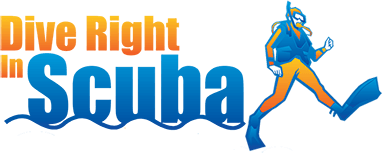For the longest time, newer divers most often opted for the jacket BCD as a viable entry level solution to their diving needs. Why not? Jacket BCD’s are simple, easy to operate, widely found worldwide, and more often than not an inexpensive option. In recent years, there has been an uptick in new diver interest in a BCD solution often reserved for most experienced technical divers. This solution is often referred to as the Backplate and Wing or BP/W. Nowadays, a simple skim of diving related forums are ripe with technical and detailed questions about choosing and diving a BP/W. While it can get confusing, BP/W systems are rather simple and minimalist in nature and constructed with only a few components. In an attempt to simplify BP/W selection, let’s break down the rather elementary components involved.
First off, you have the backplate which is the foundation of any BP/W system. These come in 3 basic options, aluminum, stainless steel, and plastic/composite. The aluminum backplate is often a great solution for divers who travel regularly and dive in more temperate waters. With it’s light weight, baggage weight limits are less of a concern. Of course with it’s light weight comes with the downside of not adding additional ballast. Stainless Steel backplates are a viable solution for divers who dive in cold water and need additional ballast along with those who simply want to take 4-7 lbs off of their weight belt. Finally, plastic/kydex plates offer an inexpensive option with characteristics similar to aluminum.
The next main component is the air cell that provides diver lift and neutral buoyancy. The key to selecting the right air cell or wing is figuring out how much lift you need to safely dive. Smaller wings in the 20-30 lb lift range are excellent options for single tank, warm water diving while higher lift capacities are reserved for colder waters where more weight is required as well as multiple tank technical diving. Beyond the lift capacity, the diver should focus on features such as shape, single or double/redundant bladders, location and number of relief valves, and material.
Lastly, let’s discuss harnesses which will pull the rig together and make it into a working unit. While many opt for the simple and minimalistic single piece webbing harness that works well, inexpensive, and long lasting there is also another option. Deluxe harnesses like the Dive Rite Transplate and the Hollis Elite 2 offer features like comfort padded shoulder straps, quick release buckles, and adjustable sternum straps are becoming the new choice for divers who want that little bit of added comfort and adjustability.
There you have it, the Backplate and Wing set up in a nutshell. While discussions regarding setup and use can oftentimes get rather detailed, as you can see they are quite simple and minimalistic in nature. Just remember, the experienced crew at DRIS are here to answer those sometimes confusing questions so you can stop researching and go diving!
